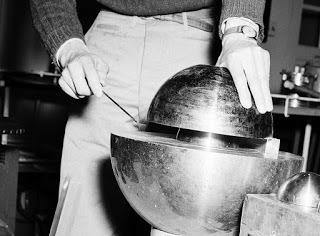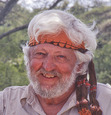The Dragon Experiment
A Prologue, kinda, from my newest book in progress. (Don’t worry, there won’t be a quiz on this.) A neutron is a subatomic particle found in the nucleus of all but one element—hydrogen, whose nucleus consists of a single proton. A neutron has a mass nearly that of a proton but has no electrical charge (the proton carries a positive charge). In the early years of nuclear physics, neutrons and protons could be thought of as sub-atomic billiard balls, solid and hefty. Now we know otherwise. Quantum physics tells us that a neutron is made up of two down-quarks and one up-quark. Don’t ask me what quarks are made of. And please don’t ask what the difference is between a down-quark and an up-quark. I leave the answer to all that in the hands of such brilliant theorists as Michio Kaku. I prefer the billiard ball analogy myself. Let it just be said that a neutron, with no electrical charge, can enter a nucleus of certain atoms, such as uranium 235 or plutonium 239, and create quantum havoc. The aftermath of that havoc is nuclear fission.In 1938, German physicists Otto Hahn and Fritz Strassman bombarded a sample of uranium metal with neutrons. Uranium, atomic number 92, was at the tail end of the periodic table of all known elements of the time. By absorbing a neutron in its nucleus, it was thought that the uranium might be transformed into a new, unknown element of atomic number 93. However, their results were baffling. Instead of a newer, heavier element, they found several lighter elements that hadn’t been there before. Lise Meitner, an Austrian physicist, suggested to them that the uranium atom had split, releasing great energy, and leaving behind the lighter atoms as fragments. Shortly thereafter Meitner’s nephew, Otto Frisch, also a physicist and a colleague of Neils Bohr, came to visit her and he suggested the term “nuclear fission” to describe the phenomenon. I was two years old when this was happening. Thirty-one years later I listened to Otto Frisch, in person, give a lecture about a fission experiment he designed for the Manhattan Project. That experiment bore similarities to a project where I worked at the time.In 1944 Frisch had been recruited to work in the Manhattan Project at Los Alamos. In early 1945 he proposed a rather risky experiment which entailed dropping a piece of fissionable Uranium 235 through a sub-critical mass of the same material, making it supercritical for an instant. The burst of fissions would help in refining calculations for the final critical mass needed for the atomic bomb. At the meeting where the presentation was made for the experiment, the famed physicist Richard Feynman began chuckling. When asked why he thought it humorous he said, “That’s like tickling the tail of a sleeping dragon.” Thereafter it was called the Dragon Experiment. Only months after the first test, the Dragon Experiment killed two physicists at Los Alamos.
 The Dragon that killed physicist Louis Slotin
The Dragon that killed physicist Louis SlotinIn 1960 I went to work in a project that was a direct descendant of that Dragon Experiment.
Published on September 02, 2019 08:38
No comments have been added yet.



